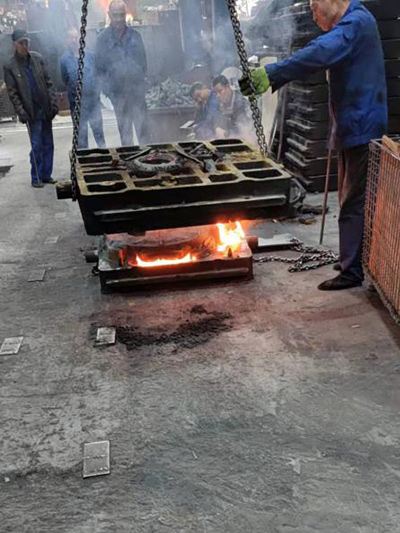Sand Cast Iron An Essential Material in Modern Manufacturing
In the realm of manufacturing, sand cast iron stands out as a remarkable material that combines versatility, durability, and cost-effectiveness. This traditional technique of cast iron production has been utilized for centuries, evolving into a sophisticated process that caters to modern industrial needs. This article explores the characteristics, production processes, applications, and advantages of sand cast iron, shedding light on its importance in today’s manufacturing landscape.
Characteristics of Sand Cast Iron
Sand cast iron is known for its unique properties, which make it an ideal choice for various applications. The most notable characteristic is its excellent castability, allowing for intricate shapes and designs. This feature is particularly beneficial in the manufacturing of complex components such as engine blocks, machine tools, and artistic sculptures.
Moreover, sand cast iron is renowned for its mechanical strength, which can withstand significant stress and strain. This strength is complemented by its ability to absorb vibrations, making it a popular material in the production of heavy machinery and automotive parts. Additionally, sand cast iron exhibits good wear resistance, enhancing the longevity of components subjected to friction and abrasion.
Another essential characteristic is its thermal conductivity. Sand cast iron can efficiently dissipate heat, making it useful in applications involving high temperatures, such as cookware and engine parts.
The Sand Casting Process
The sand casting process involves several steps, each crucial to ensuring the quality of the final product. First, a pattern, typically made of metal, wood, or plastic, is created to form the shape of the desired object. This pattern is then placed in a mold made of sand, which is bonded together using a binder. After the mold halves are assembled, molten cast iron is poured into the cavity created by the pattern, allowing it to cool and solidify.
Once the iron has cooled and solidified, the mold is broken apart to retrieve the cast object. This method not only allows for the production of complex shapes but also minimizes material waste, making it a sustainable choice for manufacturers.
Applications of Sand Cast Iron
sand cast iron

The applications of sand cast iron are vast and varied, spanning multiple industries. In the automotive sector, it is commonly used for producing engine components, transmission casings, and exhaust manifolds. The combination of strength and lightweight properties of sand cast iron makes it a preferred material for these critical components, contributing to the overall efficiency and performance of vehicles.
In the construction industry, sand cast iron is utilized for making architectural elements like railings, cast-iron pipes, and decorative facades. Its ability to withstand harsh environmental conditions while maintaining structural integrity is a significant advantage.
Moreover, sand cast iron is used in the manufacturing of industrial equipment, such as pumps, valves, and machinery housings. Its durability and resistance to corrosion make it an excellent choice for components subjected to extreme conditions.
Advantages of Sand Cast Iron
The advantages of sand cast iron extend beyond its physical properties and applications. One of the primary benefits is cost-effectiveness. The sand casting process is relatively inexpensive compared to other casting methods, making it accessible for various manufacturing operations.
Additionally, the versatility of sand cast iron allows for the production of both small and large quantities of parts. This flexibility caters to the needs of different businesses, from small-scale enterprises to large manufacturing plants.
Another key advantage is the ease of recycling. Scrap cast iron can be easily melted down and reused in the production of new components, promoting sustainability and reducing waste in the manufacturing process.
Conclusion
Sand cast iron is a quintessential material in modern manufacturing, offering a blend of strength, versatility, and cost-effectiveness. Its longstanding history and adaptability to contemporary needs underscore its significance in various industrial applications. As technology continues to advance, the potential for sand cast iron will only grow, reinforcing its role as a backbone in the manufacturing industry. Whether in automotive components, industrial machinery, or architectural designs, sand cast iron remains an essential material that shapes our world.
Post time:Kas . 08, 2024 08:05
Next:Utilization of Foundry Sand in Concrete Production and Its Benefits
